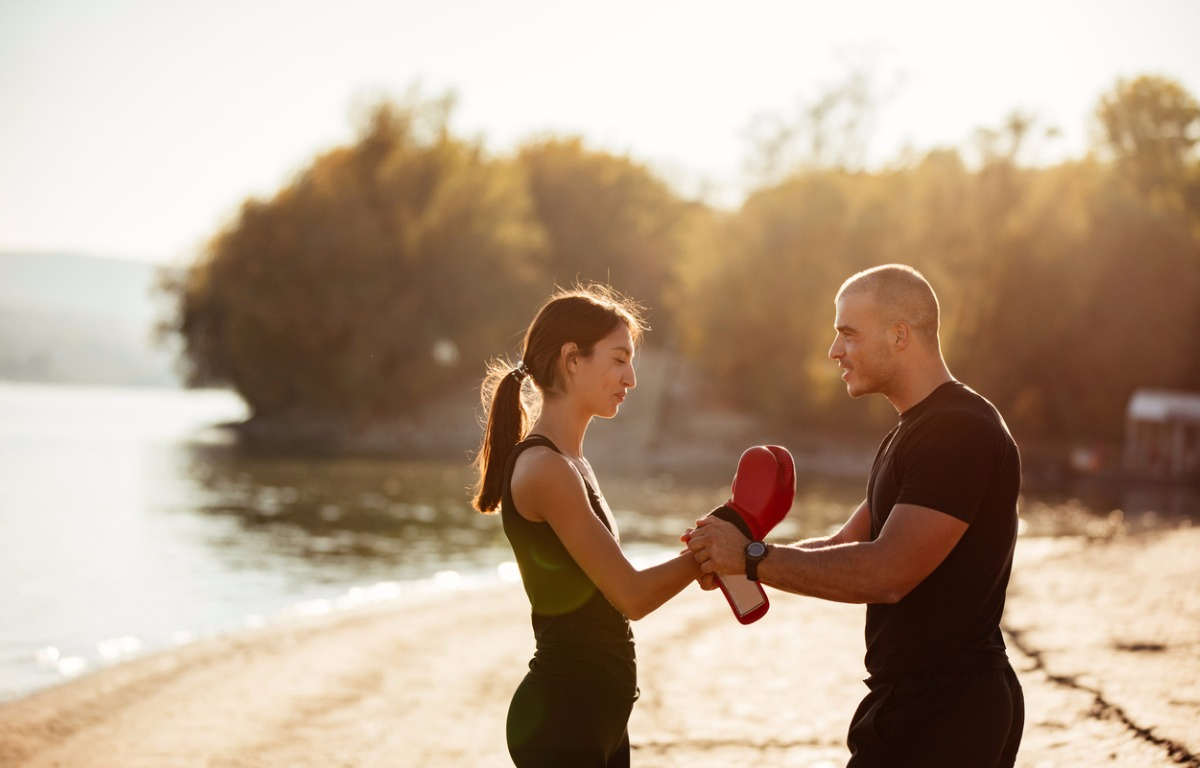Martial Artists and Personal Trainers, what is the connection? As a (very privileged) person who gets’s to deliver a lot of fantastic course to great content to a lot of PTs and GF instructors. One of the things that have helped me explain a lot of that course content, especially the movement concepts is – Martial Arts. I have been studying a couple of arts for a while now, and I genuinely believe that it has helped me in my career as a Personal Trainer to understand joint positioning and the impact it has on motion (and the ability to retard movement).
Another significant component that is a constant in any martial pursuit is – intent. Your intent and specifically your opponents intent (this statement will make more sense a little later).
Why do I believe that good martial artists make good fitness coaches?
Knowledge of the body: As a martial artist you are regularly practising body positions and then applying that position to a technique or outcome. That can be expanded quite quickly (with a little more specific education) into program design to help clients gain the adaptations they want. You have also felt the effects of when training goes well (usually associated with an increase in rank and therefore more responsibility). When it hasn’t gone so well (you’ve ended up in an arm, wrist or head lock or copped a punch or kick that just, gently, reminded you that you got it wrong).
Excellent communicator: As you’ve gone through the ranks, you’ve probably had to start helping some of the (now) lower grades to you. You’ve had to look at their technique and try and work out strategies to help them improve. Guess what a good Personal Trainer does? You’ve probably also had to learn to communicate that information using different language and learning styles for diverse students. Again, look up what good coaches do.
Able to work with all levels of clients: All martial artists understand that somewhere in their journey, they were once a ‘beginner’ themselves. Often giving you the ability to be far more empathetic and compassionate with people who are starting a fitness program. Do you remember your very first time through a Dojo door? Seeing all the strange rituals, finding your place in the room and not knowing a single person there?
Well, that’s exactly how many peoples fitness journey begins! Then remember feeling the sense of accomplishment, as you felt yourself progressing through ranks and feeling that sense of pride as you saw the colours around your waist changing colour. This understanding in you will help your Personal Training clients stay on their fitness journey.
Your students are already attending the gym or working with a trainer: You already have a network of potential Personal Training clients! You’ve training for years with some of these people. They already know you and possibly even trust you. You’ve developed that ‘rapport’ through your efforts and they respect you for that. They’ve seen you physically exert yourself over there years, or if they’re a newer student, they’ve seen you train. They know that you know what it feels like! They’ve seen you ‘do it’, so they trust that you can coach it!
You know how to work with the human being, not just the human body – Let’s get back to my earlier statement about intent. You’re intent shows through in your actions. It’s a big factor in a person’s initial observation of you. They know before you even start to verbally communicate if you’re there to help or hurt them. You may also be aware of the of the more spiritual aspects of traditional martial arts. What the Japanese Martial Artist term Shin, Gi, Tai. Mind, Skill and Body. Understanding that while yes we train the body, that is only one aspect of the whole being. Teaching skill is essential, but again it is just one part of the whole. And that the mind is a massive overarching impact on the whole being is one of the most significant aspects that will make you stand out as a good PT or GF instructor.
Why not you?
The last reason I feel any martial artist should go and obtain their fitness qualification is: for yourself. Go and educate yourself on the impact that this training is having on you. Understand what tissue the kata and postures are inflicting work on and learn strategies to help your practice through a better understanding of the human anatomy and physiology as a whole. Don’t just believe what Sensei tells you. He or she is most probably right more times than not, but, sometimes it may pay to know more.
